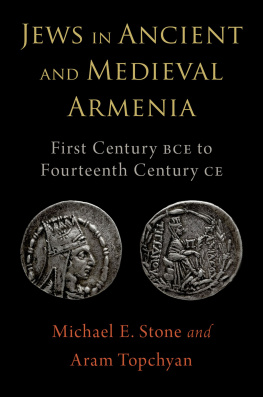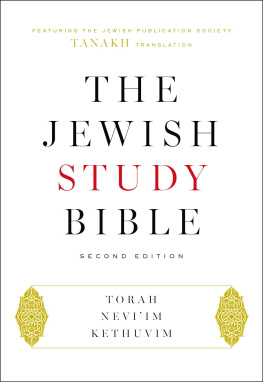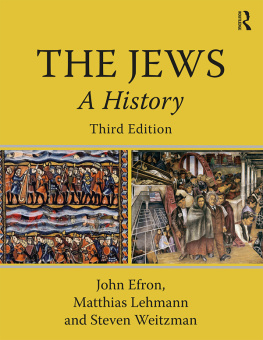Rituals of Childhood

Rituals of Childhood
Jewish Acculturation in Medieval Europe
Ivan G. Marcus

Frontispiece: Detail of school initiation scene from Leipzig Ma zor (see p. 82).
zor (see p. 82).
Honey is excerpted from the book-length poem Claims by Shirley Kaufman.
1984 The Sheep Meadow Press. Reprinted by permission.
Copyright 1996 by Yale University. All rights reserved.
This book may not be reproduced, in whole or in part, including illustrations, in any form (beyond that copying permitted by Sections 107 and 108 of the U.S. Copyright Law and except by reviewers for the public press), without written permission from the publishers.
Designed by Deborah Dutton.
Set in Postscript Monotype Joanna type by Tseng Information Systems, Inc., Durham, North Carolina.
Printed in the United States of America
Library of Congress Cataloging-in-Publication Data
Marcus, Ivan G.
Rituals of childhood : Jewish culture and acculturation in the Middle Ages / Ivan G. Marcus.
p. cm.
Includes bibliographical references and index.
ISBN 0-300-05998-1 (cloth: alk. paper)
ISBN-13: 978-0-300-07658-5 (pbk.: alk. paper)
I. Jewish religious education of preschool childrenGermanyHistory. 2. Initiation ritesReligious aspects JudaismHistory. 3. JudaismHistoryMedieval and early modern period, 425-1789. I. Title.
BM85.G4M37 1996
296.4'2dc20
95-24663
CIP
A catalogue record for this book is available from the British Library.
The paper in this book meets the guidelines for permanence and durability of the Committee on Production Guidelines for Book Longevity of the Council on Library Resources.
10 9 8 7
To Judy
Contents
Acknowledgments
This book has been gestating for many years. Parts of it were offered as lectures at the invitation of the Friends of the Library of the Jewish Theological Seminary of America, Dropsie College, the annual meeting of the Association for Jewish Studies, and the World Congress of Jewish Studies in Jerusalem.
Many colleagues read all or part of the manuscript, discussed specific points with me along the way, offered important suggestions and alternative readings and interpretations, or gave me references I had not seen before. It is a great pleasure to acknowledge the help of Shalom Bar-Asher, Sebastian Brock, Evelyn Cohen, Jeremy Cohen, Mark R. Cohen, Shaye J. D. Cohen, Giles Constable, Joseph Dan, Howard Eilberg-Schwartz, Shamma Friedman, Isaiah Gafni, Avraham Grossman, Itamar Gruenwald, Joseph Hacker, Elliott Horowitz, Moshe Idel, William C. Jordan, Elaine Morris, Miri Rubin, David Ruderman, Peter Schfer, Raymond P. Scheindlin, Annemarie Schimmel, Menahem Schmelzer, Robert Stacey, Regina Stein, Kenneth R. Stow, Michael Swartz, Israel Ta-Shema, Eli Yassif, Israel Yuval, Yitzhaq (Eric) Zimmer, and the anonymous reader for Yale University Press.
I wish to express my appreciation to Professor Menahem Schmelzer, former Librarian, and Professor Mayer Rabinowitz, Librarian of the Jewish Theological Seminary Library. Over the years, they and Rabbi Jerry Schwarzbard and their assistants made the rich treasures of that unique library available to me with unfailing patience and resourcefulness.
The manuscript of this book was also improved by enthusiastic early editing from Judy Goldberg and my son Magen D. Marcus.
Robert Bonfil and Harvey Goldberg, both of the Hebrew University of Jerusalem, went out of their way to devote much time and thought to the entire manuscript. I am very grateful to them for their probing written comments and electronic and face-to-face conversations.
The completion of this book was encouraged at a critical time by my editor at Yale University Press, Charles Grench, to whom I am especially thankful.
Material support for the publication of this book has been provided by a publication grant from the Lucius N. Littauer Foundation, and it is also published with the assistance of the Louis and Minna Epstein Fund of the American Academy for Jewish Research.
It is appropriate that I dedicate this book about children to my wife, Judy, who as a pediatric hematologist and oncologist draws on her abundant energy, talent, and optimism to initiate her patients and their families into the mysteries that lie before them, and who, as my best friend since we were teenagers, has enabled us to initiate our four sons into schooling and adult life.
Rituals of Childhood
He said to me, Mortal, eat what is offered you; eat this scroll, and go speak to the House of Israel. So I opened my mouth, and He gave me this scroll to eat, as He said to me, Mortal, feed your stomach and fill your belly with this scroll that I give you. I ate it, and it tasted sweet as honey to me.
Ezekiel 3:1-3
Oh Book! infinite sweetness! let my heart
Suck every letter, and a honey gain,
Precious for any grief in any part;
To clear the breast, to mollify all pain.
The H. Scriptures I, George Herbert
Fridays my father came home
for the weekend smelling of damp wool.
He knew there were things more lavish
than his Morris chair, but he sank into it
loosening his tie, and letting me
smooth the fur of his eyebrows
with my dolls comb.
He told me his mother put honey
on his tongue the first day at heder
to sweeten his whole life....
Honey, Shirley Kaufman
Chapter One
Introduction: Ritual and Medieval Jewish Cultural History
At age five or six, a Jewish boy living in medieval Germany or France might begin his formal schooling by participating in a special ritual initiation ceremony. The boy is seated on the teachers lap, and the teacher shows him a tablet on which the Hebrew alphabet has been written. The teacher reads the letters first forwards, then backwards, and finally in symmetrically paired combinations, and he encourages the boy to repeat each sequence aloud. The teacher smears honey over the letters on the tablet and tells the child to lick it off.
Cakes on which biblical verses have been written are brought in. They must be baked by virgins from flour, honey, oil, and milk. Next come shelled hard-boiled eggs on which more verses have been inscribed. The teacher reads the words written on the cakes and eggs, and the boy imitates what he hears and then eats them both.
The teacher next asks the child to recite an incantation adjuring POTA , the prince of forgetfulness (sar ha-shikhe
, the prince of forgetfulness (sar ha-shikhe ah), to go far away and not block the boys heart (lev; i.e., mind). The teacher also instructs the boy to sway back and forth when studying and to sing his lessons out loud.
ah), to go far away and not block the boys heart (lev; i.e., mind). The teacher also instructs the boy to sway back and forth when studying and to sing his lessons out loud.
As a reward, the child gets to eat fruit, nuts, and other delicacies. At the conclusion of the rite, the teacher leads the boy down to the riverbank and tells him that his future study of Torah, like the rushing water in the river, will never end. Doing all of these acts, we are told, will expand the (childs) heart.
This book is a study of the history and interpretations of the medieval Jewish initiation ritual by means of which a northern European or Ashkenazic Jewish boy began his religious studies. It illustrates how an anthropological historical approach to the history of medieval Jewish ritual can contribute to a new cultural history of medieval European Jews viewed as a distinctive culture. Understanding medieval European Judaism as a culture, in turn, suggests a new model for thinking about Jewish acculturation in medieval Europe, the interactions that occurred between Jews and Christians in the larger society in which both were actively present. By analyzing rituals, gestures, narratives, and pictorial representations, we will see how ancient Jewish traditions were remembered and reconfigured, often as part of a polemical response to contemporary Christian symbols.
Next page









 zor (see p. 82).
zor (see p. 82). , the prince of forgetfulness (sar ha-shikhe
, the prince of forgetfulness (sar ha-shikhe